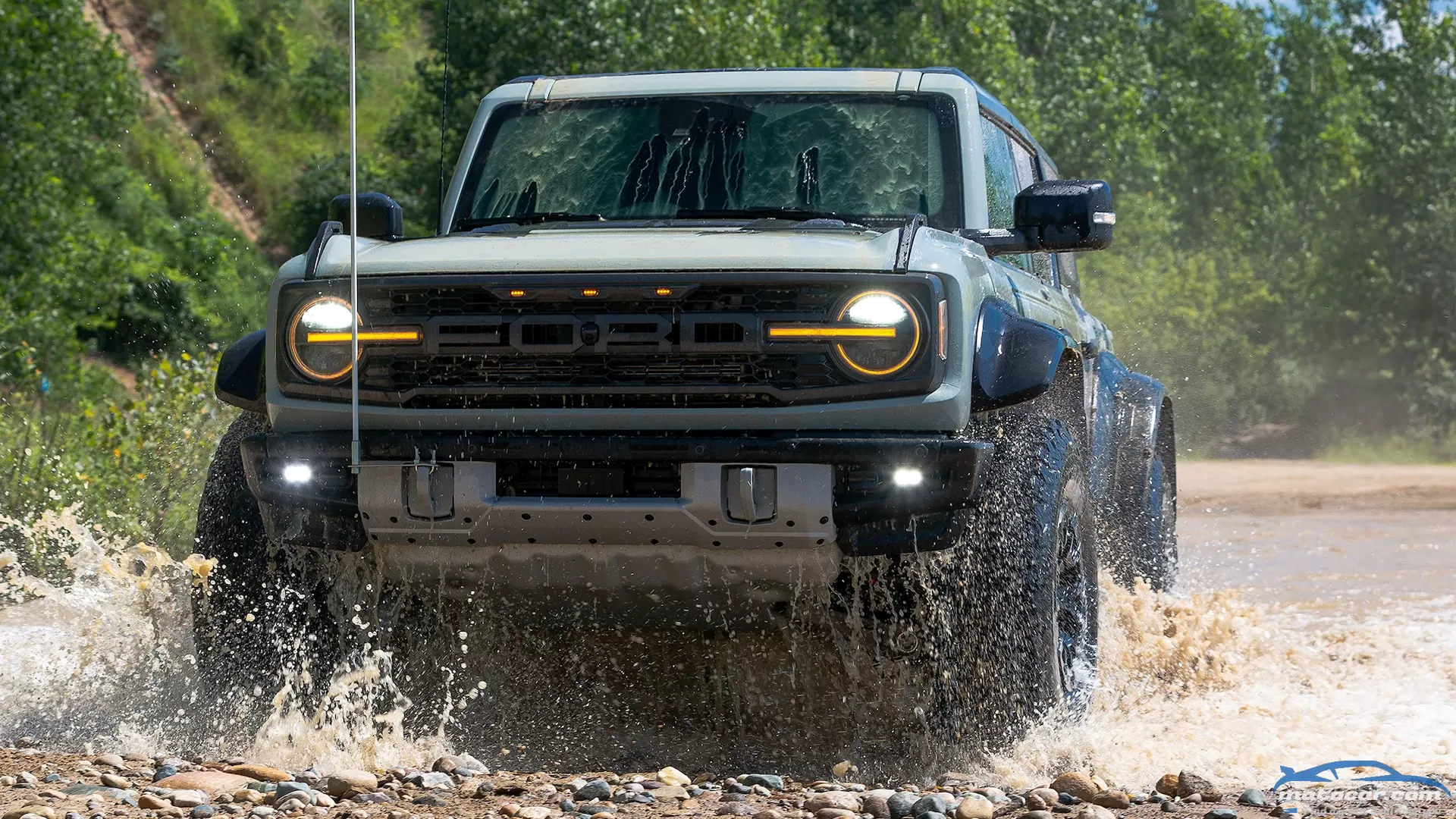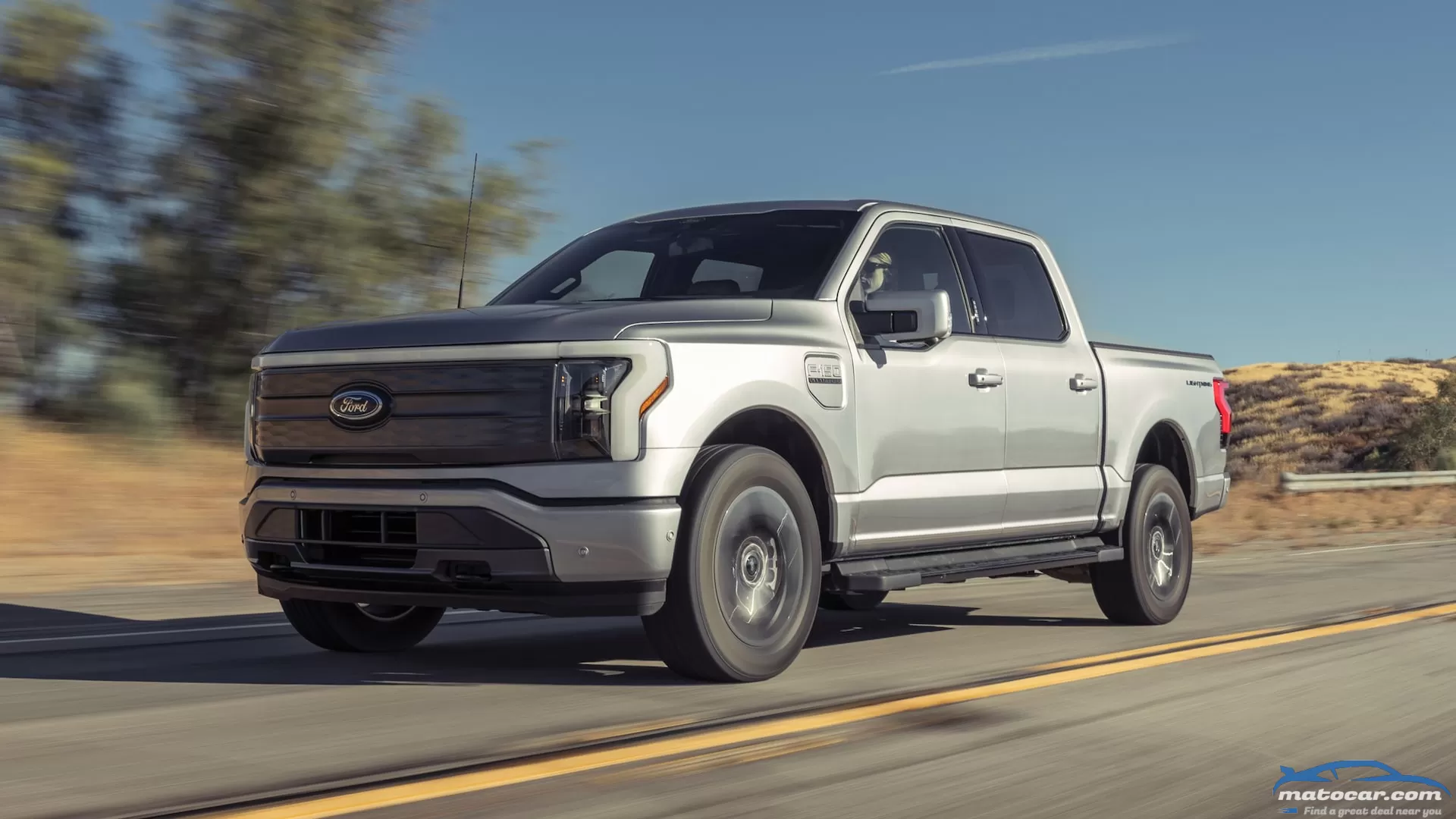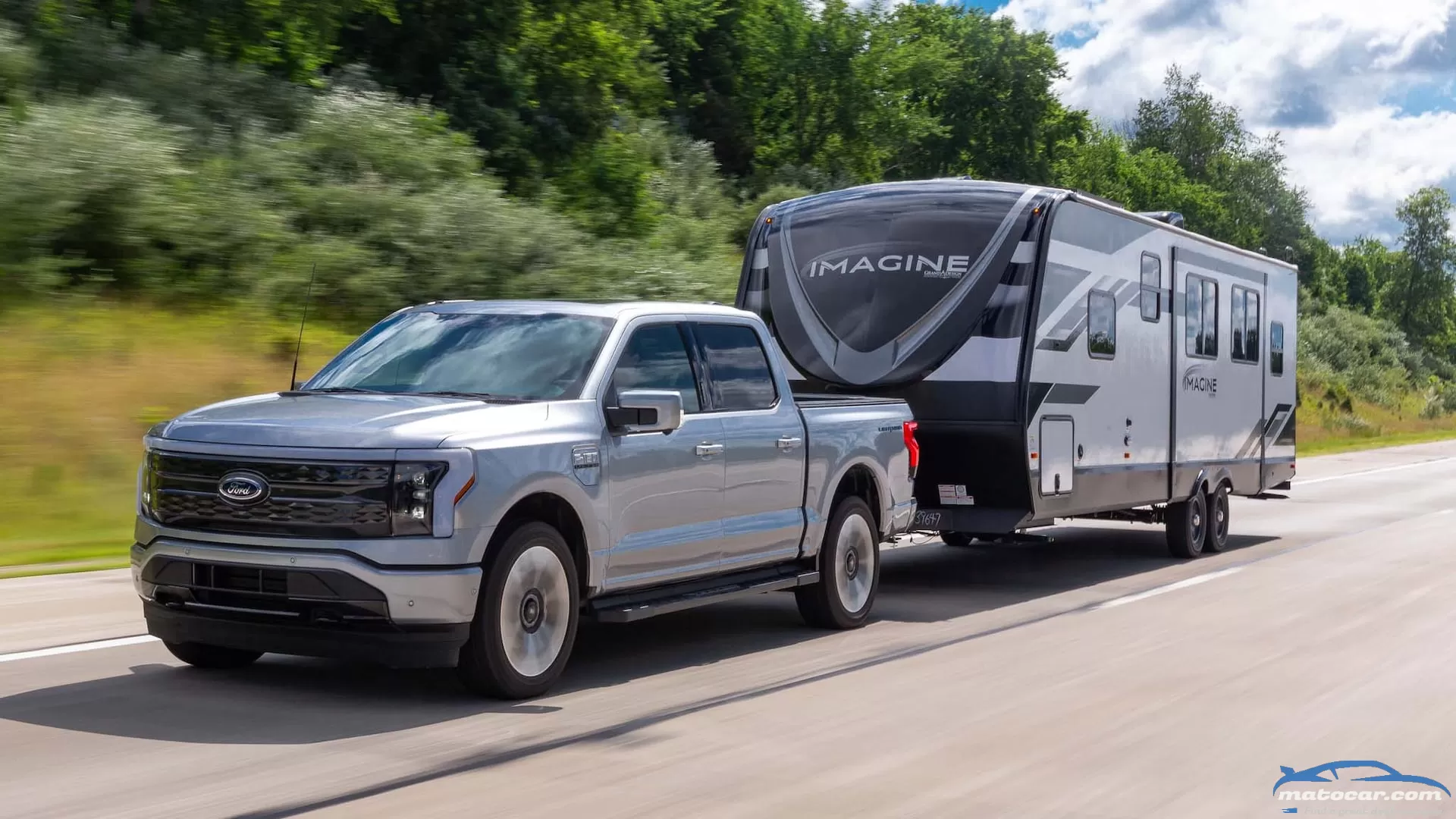2022 Ford Bronco Raptor First Test: Absolutely Awesome!

Pros
- Dune-bashing, mud-splashing, rock-crawling fun
- Shockingly good road manners
- Unfazed by potholes and frost heaves
Cons
- Half-ton weight gain
- Could have had a V-8
- Slow steering makes for busy hands
From the driver's seat of the 2022 Ford Bronco Raptor, a pond looks like a puddle, a boulder field looks like a gravel road, and a Mitsubishi Mirage looks like a speed bump. This $70,095 off-road colossus—it's 85.7 inches wide and has 37-inch-tall tires—bounds across the gnarliest terrain and towers over traffic with an air of invincibility that shrinks everything in its path. Objects in the windshield are larger than they appear when you're riding this high, literally and metaphorically.
It doesn't take long for this Raptor's immense capability to go to your head. In the same way that the best Porsches make drivers into heroes, the Bronco Raptor turns the person behind the wheel into a villain—reckless, all powerful, above the law. Driving a Bronco Raptor means fighting an incessant urge to straight-line every roundabout. You'll fantasize about blasting by gridlock traffic on the shoulder and turning every open space you pass into an off-road park.
Roads? Where We're Going, We Don't Need Roads
To keep those anti-social and imprisonable impulses at bay, it's important to regularly exercise the baddest Bronco in its natural habitat, which happens to be wherever civilization isn't. Ford has built the Raptor brand around high-speed desert-running antics, and the Bronco abides with big-barrel Fox Racing dampers calming the suspension as it strokes through up to 13 inches of travel in the front and 14 in the rear. Electronically adjustable valving adapts to whatever happens to be pummeling the suspension at any given moment, while internal bypasses cushion the biggest hits.
Translation: The harder and faster you drive, the less the Bronco Raptor is fazed by the terrain. In its signature Baja mode, this SUV combines sports-car reflexes with the compliance of a bounce house. The 10-speed automatic cracks off up- and downshifts with perfect timing and the BF Goodrich All-Terrain T/A KO2 tires find traction where there is none, all while bombing over terrain that would fold a Honda in half.
This Bronco isn't a one-trick pony, though. It will just as eagerly and expertly pick its way through a boulder-strewn ravine with the 360-degree camera system putting your spotter out of a job. It can wade into a waist-deep swamp and negotiate a mud-slicked trail (as long as those washtub fenders fit between the trees). There's a dizzying amount of adjustability in the Raptor's four exhaust modes, three steering settings, four damper calibrations, locking front and rear differentials, front anti-roll-bar disconnect, and the transfer case that offers rear-wheel drive, high-range four-wheel drive, or low-range four-wheel drive. Trying to tune all that via buttons on the steering wheel, atop the dash, and on the center console proves tedious, but Ford has smartly included shortcuts to several useful combinations via the preset GOAT modes (Normal, Off-Road, Rock Crawl, Baja, Sport, Tow/Haul, Slippery) and a customizable MyMode.
Those Road Manners Aren't Shabby, Either
The Bronco Raptor's 0.67 g of lateral grip and 160-foot 60-mph stopping distance are atrocious by any objective measure of on-road performance, but those numbers bury the subjective excellence of how this truck steers, handles, and rides when it returns to the civilized, asphalt world. Thanks to the impossibly wide stance, the body doesn't roll in corners so much as it squats over the outside wheels, creating a surprising sense of stability.
The heavy hiking boots pound the pavement and send tremors into the body at city speeds, but just as it does off road, the Raptor becomes supple—even graceful—the faster you go. On the highway, it floats over expansion joints and potholes, making it the perfect vehicle for traversing our pre-apocalyptic infrastructure in comfort and without fear of damaging a tire.
At 3.2 turns lock-to-lock, the steering feels slow when you're sliding the Raptor sideways on dirt or hustling down a tight two-lane. Nevertheless, the steering wheel would be at home in a Mazda Miata, both for the way its sculpted rim fits your hands and its exacting precision.
How Quick Is the Ford Bronco Raptor?
If there's a weak spot in the Raptor's game, it's the engine. The twin-turbo 3.0-liter V-6 raises output by 103 horsepower and 30 lb-ft of torque compared to the 2.7-liter unit available on lesser Broncos. Yet you wouldn't guess it's packing 418 horsepower from the driver's seat or looking at the numbers. That's because this leviathan weighs 5,778 pounds, or nearly 1,000 more than the V-6-powered Bronco Outer Banks we tested last year. The Raptor hides that weight well in cornering, but it's palpable under acceleration.
The Raptor covered 0-60 mph in 6.3 seconds and cleared the quarter mile in 14.9 seconds in MotorTrend testing, both just 0.3 second quicker than the Outer Banks model. That's significantly slower than we originally predicted and worse than what the Raptor's weight-to-power ratio suggests it should be capable of. That also places it two whole seconds behind its chief rival, the 470-hp Jeep Wrangler Rubicon 392. Yet no matter what we tried at the track, the Raptor returned consistently sluggish runs.
The engine also fails to deliver on this truck's nickname, "Braptor." It never so much as blips, blats, rips, snorts, burbles, chortles, barks, or braps. The adjustable exhaust is performative theater, merely amplifying the engine's thrum at part-throttle and low rpm. At full throttle in any mode, the V-6 sounds too flat, too muffled, and too high-pitched for a truck this rowdy.
The SUV That Conquers All
In a motoring world overrun with Wranglers and 4Runners, the Bronco Raptor still stands out as one of a kind. With its appetite for high-speed hooning, its composure on paved roads, and its ability to tackle any type of terrain, it's as close as you'll come to finding a truck that will drive anywhere and over anything. Try to resist the urge.
Looks good! More details?2022 Ford Bronco Raptor Specifications BASE PRICE $70,095 PRICE AS TESTED $78,750 VEHICLE LAYOUT Front-engine, 4WD, 5-pass, 4-door SUV ENGINE 3.0L Twin-turbo direct-injected DOHC 24-valve 60-degree V-6 POWER (SAE NET) 418 hp @ 5,750 rpm TORQUE (SAE NET) 440 lb-ft @ 2,750 rpm TRANSMISSION 10-speed automatic CURB WEIGHT (F/R DIST) 5,778 lb (55/45%) WHEELBASE 116.5 in LENGTH x WIDTH x HEIGHT 191.0 x 85.7 x 77.8 in 0-60 MPH 6.3 sec QUARTER MILE 14.9 sec @ 91.0 mph BRAKING, 60-0 MPH 160 ft LATERAL ACCELERATION 0.67 g (avg) EPA CITY/HWY/COMB FUEL ECON 15/16/15 mpg EPA RANGE, COMB 318 miles ON SALE Now Show AllYou may also like
Do you want the good news or the bad news first? Well, we can't hear you, unfortunately, so we'll start with the good and get to the bad in a second. This is the 2022 Mazda CX-60, a plug-in hybrid (PHEV) crossover SUV that combines impressive total system output with what appears to be impressive overall fuel economy (if, of course, you plug it in often). The numbers are impressive, and so is the latest evolution of the company's Kodo design language, which looks more premium than ever.Power!Let's start with the PHEV powertrain. It combines the company's familiar 2.5-liter I-4 gas engine with a 100-kW e-motor and a 17.8-kWh battery, good for a total of 323 horsepower. That, Mazda says, makes it the most powerful road-going car the company's ever made. And with a 5.8-second sprint to 62 mph, this Mazda won't be a slouch at a stoplight, either.Mazda also claims this PHEV can travel 37 miles on pure electric power before its gas engine must fire and work in tandem with the electric motor as a hybrid. Its fuel consumption and emissions figures look impressive, too. And in the future, the CX-60 will get a number of additional powertrains, including a 3.0-liter e-Skyactiv-X I-6 and a 3.3-liter Skyactiv-D diesel, both equipped with 48V mild-hybrid systems that Mazda calls M Hybrid Boost. The CX-60 will feature i-Activ AWD, but when the I-6s come around, they will have the option of rear-wheel-drive. The CX-60 PHEV can even tow more than 5,500 lbs.KodoThe CX-60 is a shapely SUV, with proportions that draw attention to its new, rear-drive-based architecture in a huge way. The long hood and short front overhang give it a sleek look. The new grille has a premium texture that's accentuated by its bright surround and interesting divorced/integrated running light arrangement. Out back, things are handsome if a bit more generic. Devoid of badges, it could be an Infiniti or a BMW. The quad rhomboid exhausts are a nice touch, and well-integrated into the rear end. Chrome brightwork and fender garnishes add a bit of jewelry to the flanks.Inside, it's typical modern Mazda stuff, but the dash adopts a layered appearance with stacked horizontal elements, some of which surround and partially shroud the wide infotainment screen. Some specs will use interesting textiles and woods, giving it a bit more character than the rather drab appearance provided in these photos. The CX-60 is a two-row vehicle, by the way, although it's about six inches longer than our market's 2022 Mazda CX-5.What Does This Mean for Us?If all of this sounds a little too fantastical for an upcoming American-market Mazda, you're right. The bad news is that we won't get the CX-60. What we will get is the slightly larger CX-70, which will be related to the CX-60 and share many of its powertrains. It's unlikely that either of these I-6s will arrive on these shores, but it's possible a non-Skyactiv-X gasoline I-6 might arrive with the same 3.0-liter displacement. Meanwhile, it's a safe bet that our CX-70 PHEV will match or exceed the CX-60's 323-hp rating.So, good news, bad news, and something to look forward to.
ford f-150-lightning Full OverviewYou no doubt keep hearing about how important the 2022 Ford F-150 Lightning electric pickup truck is to the automotive industry. The bestselling vehicle in America—one with a traditionally conservative ownership base—is taking a giant leap toward our inevitable future by electrifying. You may have also read our First Test of the range-topping 2022 F-150 Lightning Platinum and might be wondering (as we were) how a slightly more mainstream model would perform. Ford was kind enough to send the still-premium but slightly more affordable 2022 F-150 Lighting Lariat Extended Range to our Los Angeles office, and we took it to our test track to see what it could do.Why It's ImportantLike the metal it's named for, the F-150 Lightning Platinum will likely be among the rarest variants of the new electric pickup's lineup. It's also the heaviest variant, at 6,900 pounds, which makes it the most inefficient, too—netting just 300 miles of EP-rated range. The F-150 Lightning Lariat Extended Range (meaning it has the optional $10,000 130-kWh battery that comes standard on the Platinum) is bit leaner than the Platinum at 6,794 pounds, good for 320 miles of range, and more akin to the midgrade XLT Extended Range models, which are likely to make up the bulk of Ford's Lightning sales. It features dual permanent-magnet electric motors that combine for 580 hp and 775 lb-ft of torque. The motors are mounted at the front and rear axles (in fact, if you peek underneath the Lightning, you can spot the rear motor hanging out where you'd expect a differential to be on gas models) giving them all-wheel drive.Pros: What We LikeThere's a lot to like about this "lesser" Lightning. For starters, the Lariat is quicker than the loaded Platinum. The F-150 Lightning Lariat zips from 0 to 60 mph in 3.8 seconds and on through the quarter mile in 12.4 seconds at 106.9 mph, while the Platinum's bests were 4.0 seconds to 60 mph and 12.7 seconds at 105.9 mph. That makes the F-150 Lightning Lariat the quickest F-150 we've ever tested and the third-quickest pickup we've ever tested, just behind the 2022 Rivian R1T (3.1 seconds, 11.6 seconds at 110.8 mph) and 2022 GMC Hummer EV pickup (3.0 seconds, 11.7 seconds at 105.4 mph).More than its performance, the F-150 Lightning Lariat is plain great to drive. Its powertrain is effortlessly smooth (except for occasional front-motor torque steer under hard acceleration in low-traction situations), and it has gobs of power, providing nearly endless acceleration no matter your starting speed. The Lightning handles surprisingly well, too. Despite its trucklike ride and steering feel, its low center of gravity helps it corner far better than gas F-150s. And we continue to value its huge frunk, which offers a ton of lockable storage while keeping the cabin available for four or five passengers.Cons: What We Don't LikeAs software becomes more prevalent in new vehicles, it's rapidly becoming more important in defining how we experience our cars, trucks, and SUVs. In the Ford's case there's some room for improvement there. For starters, the F-150 Lightning's peak charge rate (150 kW officially, 171 kW in our testing) is on the conservative end for a vehicle with such a massive battery pack. Effectively a measure of the maximum rate an EV can cram electrons into its battery pack while DC fast charging, the Ford's peak charge rate is slower than an R1T with a similarly sized battery pack (220 kW) and the Hummer EV, which sports 200 kWh of capacity and has a 350-kW peak charge rate. That means the Ford's electric pickup truck competitors will likely be spending less time at the fast charger while on a road trip or towing than the Lightning.We also found the massive 15.5-inch touchscreen to be a bit laggy at times and not as thoughtfully organized as it could be. For example, changing the F-150's drive mode requires a tap on the Lightning icon in the top left corner then another tap on your preferred mode. Locking the rear differential requires you navigate back to that screen then scroll down and tap the diff button. If you find yourself regularly hitching and unhitching trailers, you'll also need to access the towing menus often to "virtually" disconnect the trailer and restore your unladen driving range to the Ford's digital instrument cluster. The Lightning can also prove fussy when adjusting settings like maximum charge percent, which must be manually toggled each time you plug in, or the truck otherwise defaults to 90 percent maximum charge.Given Ford's embrace of software in its new "Model e" EV division, we're cautiously optimistic that the Lightning will be improved via over-the-air (OTA) updates, much in the same way its competitors are.The Bottom LineThe Ford F-150 Lightning Lariat is a seriously compelling electric pickup truck without the fuss (or some of the finesse) of the R1T or Hummer EV pickup.Looks good! More details?2022 Ford F-150 Lightning Lariat (Ext Range) Specifications BASE PRICE $69,269 PRICE AS TESTED $80,839 VEHICLE LAYOUT Front- and rear-motor, AWD, 5-pass, 4-door truck MOTOR TYPE Permanent-magnet electric POWER (SAE NET) 580 hp TORQUE (SAE NET) 775 lb-ft TRANSMISSIONS 1-speed automatic CURB WEIGHT (F/R DIST) 6,794 lb (50/50%) WHEELBASE 145.5 in LENGTH x WIDTH x HEIGHT 232.7 x 80.0 x 78.3 in 0-60 MPH 3.8 sec QUARTER MILE 12.4 sec @ 106.9 mph BRAKING, 60-0 MPH 133 ft LATERAL ACCELERATION 0.73 g (avg) MT FIGURE EIGHT 27.2 sec @ 0.63 g (avg) EPA CITY/HWY/COMB FUEL ECON 78/63/70 mpg-e EPA RANGE, COMB 320 miles ON SALE Now Show All
ford f-150-lightning Full Overview How Much Can the Ford F-150 Lightning Tow?2022 Ford F-150 Lightning Towing Capacity Standard-Range Battery Extended-Range Battery Pro XLT Lariat Platinum Show AllThe Test: Towing the LineThe Results: How Far Can a Ford F-150 Lightning Tow?2022 Ford F-150 Lightning Platinum Towing Test Forest River R Pod RP-153 Coachmen Freedom Express 246RKS Grand Design Imagine 2910BH TRAILER WEIGHT LENGTH APPROXIMATE FRONTAL AREA MT ROAD-TRIP RANGE Show AllWhat's It Like To Tow With the Ford F-150 Lightning?Looks good! More details?




0 Comments